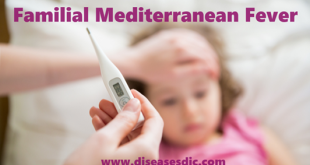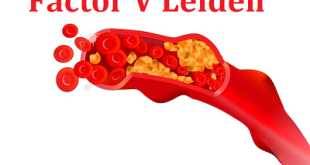What is called Food Allergy?
Reaction to certain food components is called food allergy. It occurs when the cells of the immune system recognise a substance in food as harmful and try to destroy it. The substance which triggers an allergic reaction is called an allergen. The most common allergen in foods is proteins.
Food allergies can develop at any age. While some childhood allergies disappear later in life, a few may last forever. According to experts, children who outgrow one type of food allergy may develop a more severe and persistent type of allergy to the same food. According to researchers, high vitamin D levels in pregnancy could trigger a food allergy in the baby. Including solid food besides breast milk in a baby’s diet after the 17th week of birth helps develop a stronger immune system to fight food allergies.
Types of Food Allergies
True food allergies can be divided into two main types:
- Immunoglobulin E (IgE) mediated. In this type of food allergy, your body’s immune system makes IgE antibodies that react with certain food. Antibodies are a type of blood protein used by your immune system to recognize and fight infection. An IgE-mediated allergic reaction usually occurs within several hours of eating the food allergen and can include mild to severe symptoms, including anaphylaxis
- Non-IgE mediated. In a non-IgE food allergy, your immune system does not make IgE antibodies, but other parts of the immune system are engaged in mounting a response against the perceived threat. A non-IgE mediated allergic reaction often involves skin or digestive symptoms, or a combination of those symptoms, including vomiting and diarrhea, and can occur up to 3 days after eating the food allergen
- Mixed IgE and non-IgE-mediated food allergies – some people may experience symptoms from both types.
What causes Food Allergies?
In those with food allergies, the immune system treats a specific protein in a food as a harmful substance that may cause disease. It responds by producing IgE antibodies that will play a role in attacking this protein.
When the person eats the same food again, the antibodies are ready, so the immune system reacts immediately by releasing histamine and other chemical substances into the bloodstream. These chemicals cause the symptoms of food allergies.
Histamine causes blood vessels to expand and the skin to become inflamed or swollen. It also affects the nerves, making the skin feel itchy. The nose may produce more mucus, resulting in itching, burning, and a streaming nose.
Which Food Allergies are most common?
In adults, they include:
- Peanuts
- Tree nuts, such as walnuts
- Shellfish, including shrimp, crayfish, lobster, and crab
For children, the food allergens that most often cause problems are:
- Eggs
- Milk
- Peanuts
Adults usually don’t lose their allergies, but children do sometimes. Kids are more likely to outgrow allergies to milk, eggs, and soy than to peanuts, fish, and shrimp.
The foods that you’ll react to are often those that you eat regularly. In Japan, for example, you’ll find rice allergy. In Scandinavia, codfish allergy is common.
Risk factors of Food Allergy
Food allergy risk factors include:
- Family history. You’re at increased risk of food allergies if asthma, eczema, hives or allergies such as hay fever are common in your family.
- Other allergies. If you’re already allergic to one food, you may be at increased risk of becoming allergic to another. Similarly, if you have other types of allergic reactions, such as hay fever or eczema, your risk of having a food allergy is greater.
- Age. Food allergies are more common in children, especially toddlers and infants. As children grow older, their digestive systems mature and their bodies are less likely to absorb food or food components that trigger allergies.
Fortunately, children typically outgrow allergies to milk, soy, wheat and eggs. Severe allergies and allergies to nuts and shellfish are more likely to be lifelong.
- Asthma. Asthma and food allergy commonly occur together. When they do, both food allergy and asthma symptoms are more likely to be severe.
Factors that may increase your risk of developing an anaphylactic reaction include:
- Having a history of asthma
- Being a teenager or younger
- Delaying use of epinephrine to treat your food allergy symptoms
- Not having hives or other skin symptoms
What are the Signs & Symptoms of a Food Allergy?
An allergic reaction is an immune system response in which chemicals like histamine are released in the body. An allergic reaction can be mild or severe. A person can have a severe reaction to a food even if their previous reactions were mild. Symptoms of an allergic reaction can include:
- Wheezing
- Trouble breathing
- Coughing
- Hoarseness
- Throat tightness
- Belly pain
- Vomiting
- Diarrhea
- Itchy, watery, or swollen eyes
- Hives
- Red spots
- Swelling
- A drop in blood pressure, causing lightheadedness or loss of consciousness (passing out)
Sometimes, an allergy can cause a severe reaction called anaphylaxis. Anaphylaxis might start with some of the same symptoms as a less severe reaction, but can quickly get worse. The person may have trouble breathing or pass out. More than one part of the body might be involved. If it isn’t treated with injectable epinephrine, anaphylaxis can be life-threatening.
Complications
Complications of food allergy can include:
- Anaphylaxis. This is a life-threatening allergic reaction.
- Atopic dermatitis (eczema). Food allergy may cause a skin reaction, such as eczema.
How to get Tested?
A food allergy will usually cause some sort of reaction every time the trigger food is eaten. Symptoms can vary from person to person, and you may not always experience the same symptoms during every reaction. Allergic reactions to food can affect the skin, respiratory tract, gastrointestinal tract and cardiovascular system. It is impossible to predict how severe the next reaction might be, and all patients with food allergies should be carefully counseled about the risk of anaphylaxis, a potentially fatal reaction that is treated with epinephrine (adrenaline).
While food allergies may develop at any age, most appear in early childhood. If you suspect a food allergy, see an allergist, who will take your family and medical history, decide which tests to perform (if any) and use this information to determine if a food allergy exists.
To make a diagnosis, allergists ask detailed questions about your medical history and your symptoms. Be prepared to answer questions about:
- What and how much you ate
- How long it took for symptoms to develop
- What symptoms you experienced and how long they lasted.
After taking your history, your allergist may order skin tests and/or blood tests, which indicate whether food-specific immunoglobulin E (IgE) antibodies are present in your body:
- Skin-prick tests provide results in about 20 minutes. A liquid containing a tiny amount of the food allergen is placed on the skin of your arm or back. Your skin is pricked with a small, sterile probe, allowing the liquid to seep under the skin. The test, which isn’t painful but can be uncomfortable, is considered positive if a wheal (resembling the bump from a mosquito bite) develops at the site where the suspected allergen was placed. As a control, you’ll also get a skin prick with a liquid that doesn’t contain the allergen; this should not provoke a reaction, allowing comparison between the two test sites.
- Blood tests, which are a bit less exact than skin tests, measure the amount of IgE antibody to the specific food(s) being tested. Results are typically available in about a week and are reported as a numerical value.
- Food diary: The person writes down everything they eat and describes symptoms if they occur.
- Physician-supervised blinded oral food challenge: This is the most scientific method to diagnose a food allergy accurately. A physician gives the person a suspected food allergen in increasing amounts, monitoring for symptoms under close supervision. This method removes the chance of psychological reactions.
Your allergist will use the results of these tests in making a diagnosis. A positive result does not necessarily indicate that there is an allergy, though a negative result is useful in ruling one out.
In some cases, an allergist will recommend an oral food challenge, which is considered the most accurate way to make a food allergy diagnosis. During an oral food challenge, which is conducted under strict medical supervision, the patient is fed tiny amounts of the suspected trigger food in increasing doses over a period of time, followed by a few hours of observation to see if a reaction occurs. This test is helpful when the patient history is unclear or if the skin or blood tests are inconclusive. It also can be used to determine if an allergy has been outgrown.
Because of the possibility of a severe reaction, an oral food challenge should be conducted only by experienced allergists in a doctor’s office or at a food challenge center, with emergency medication and equipment on hand.
How to treat Food Allergies?
Currently, food allergies cannot be cured.
Scientists are investigating new ways to help people manage food allergies and possibly desensitize them to allergens, but these are still being developed.
Whether you have an IgE-mediated or non-IgE–mediated food allergy, the best way to avoid an allergic reaction is to identify the foods you are allergic to and strictly avoid them.
Depending on the severity of your food allergy, your healthcare professional may prescribe medications, including epinephrine auto-injectors, for you to carry with you at all times in case you accidentally ingest and have a reaction to a food you’re allergic to. These medications may include:
- Epinephrine. This medication helps reverse symptoms of a serious type of allergic reaction called anaphylaxis. Brand-name epinephrine auto-injectors include EpiPen and Auvi-Q.
- Antihistamines. These medications can help reduce itching and congestion from less severe allergic reactions.
- Corticosteroids. These medications may be prescribed to reduce swelling from more severe allergic reactions.
It is important to take all symptoms of food allergy seriously. Both mild and severe symptoms of an IgE-mediated allergic reaction can lead to anaphylaxis, which is a medical emergency.
While non-IgE–mediated food allergies are less likely to lead to anaphylaxis, they can significantly affect quality of life and should be addressed.
If you suspect you have a food allergy, consult a doctor or allergist to determine which foods you’re allergic to and should avoid.
You may also find it helpful to meet with a registered dietitian who can help you safely avoid foods you’re allergic to while ensuring you’re eating a varied, balanced diet that meets your nutrient needs.
Prevention of Food Allergy
If you feel you or your child is allergic to a particular food:
- Eliminate the food from the diet immediately and see if the reactions stop
- Confirm whether the reaction was due to allergy by taking a test
- Once you know your food allergen, check whether you should avoid any other foods that may cause an allergic response
- Read labels while buying any processed foods. Check if the ingredients contain the allergen before consuming processed foods
- Carry your prescribed medicines wherever you go
- Visit a doctor for special nutrition
- Tell your dear ones about your food allergy
 Diseases Treatments Dictionary This is complete solution to read all diseases treatments Which covers Prevention, Causes, Symptoms, Medical Terms, Drugs, Prescription, Natural Remedies with cures and Treatments. Most of the common diseases were listed in names, split with categories.
Diseases Treatments Dictionary This is complete solution to read all diseases treatments Which covers Prevention, Causes, Symptoms, Medical Terms, Drugs, Prescription, Natural Remedies with cures and Treatments. Most of the common diseases were listed in names, split with categories.







